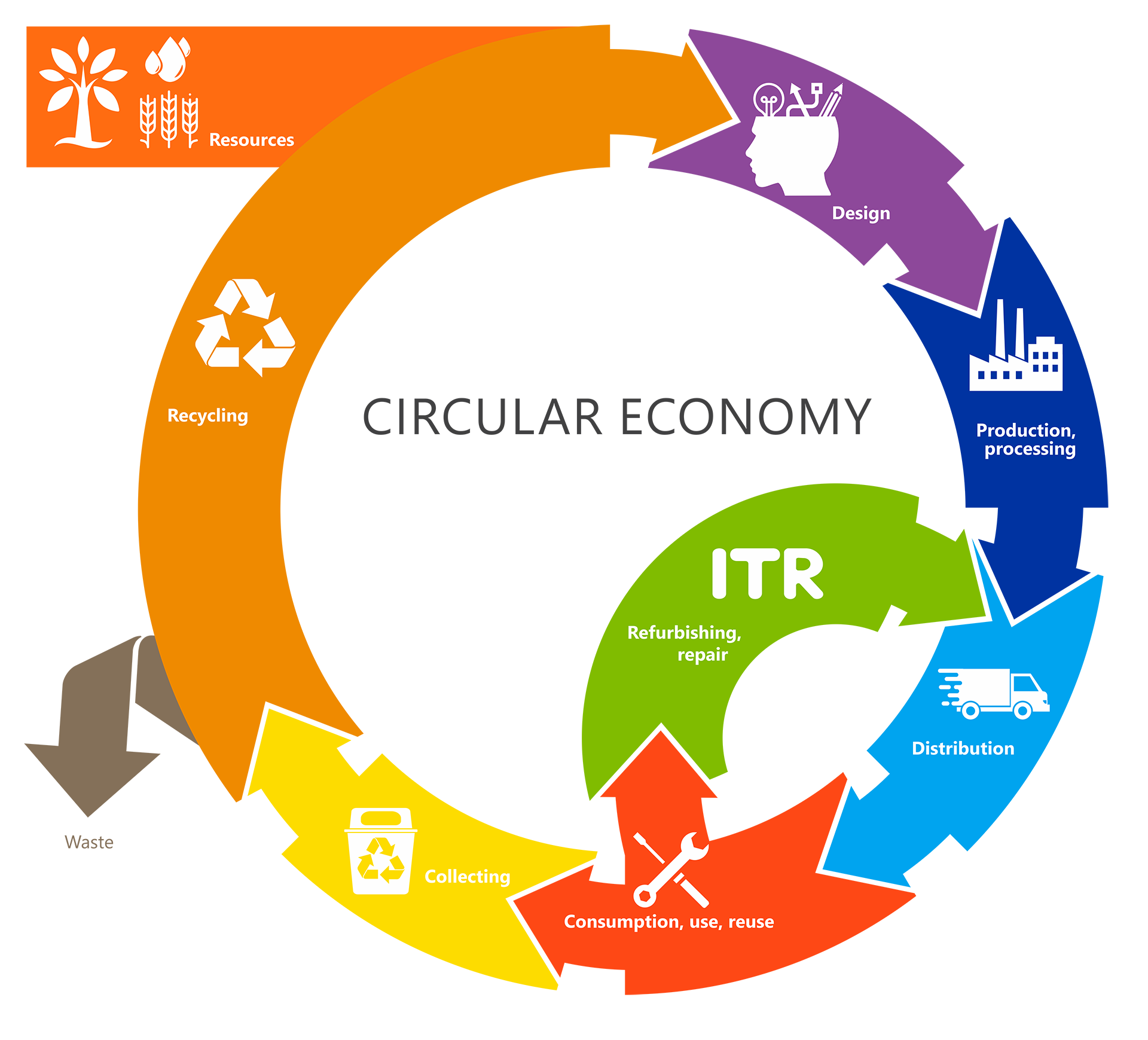The whole European Union is transitioning towards a more innovative and more sustainable model of consumption, called circular economy.
Circular economy is a model of production and consumption, which is intended towards extending the products' lifetime. In practice this means sharing, leasing, reuse, repair, refurbishment and recycling of materials and resources as long as possible.
The model in its essence is a new branch and at the same time it is a change in the vision of the existing branches. It brings benefits to the environment, the economy and all of us.


 creates new jobs;
creates new jobs;
 creates added value;
creates added value;
 creates sustainability of the products (by extending their lifetime);
creates sustainability of the products (by extending their lifetime);
 regulates the production of better (in terms of quality) and more repairable products;
regulates the production of better (in terms of quality) and more repairable products;
 saves valuable materials;
saves valuable materials;
 saves money;
saves money;
 encourages recycling and reuse;
encourages recycling and reuse;
 improves innovations and competitiveness;
improves innovations and competitiveness;
 reduces CO2 emissions;
reduces CO2 emissions;

 last but not least – it protects the environment.
last but not least – it protects the environment.Whether you are a private customer, buying a device for your personal needs, or a micro/small company or a large enterprise/organization, you would like to receive a reasonable balance between the price and quality of the IT products you’re buying, and at the same time to know that your imprint on the environment is minimal.
We are trying to contribute to protecting the environment by being a company, which sells products, which have passed through a process, which is a direct part of circular economy. You, as a consumer or our partner, which supplies our products to third parties, are becoming a part of the “future” – the circular economy as a sustainable model of development and growth.
Equipment, which has remaining value and life, is “greener” than the brand new equipment because its production carbon footprint has already been generated and the valuable resources (which the EU doesn’t have) needed for its production have already been put in.
This is why the EU has a lot of ideas and is trying to regulate:
 “the right to repair” used equipment;
“the right to repair” used equipment; brand new equipment to be more sustainable, its components to be able to be disassembled and replaced;
brand new equipment to be more sustainable, its components to be able to be disassembled and replaced; to end “planned obsolescence” of equipment;
to end “planned obsolescence” of equipment; manufacturers to be required to provide free information on how to maintain and fix the device, as well as software updates for a certain amount of time;
manufacturers to be required to provide free information on how to maintain and fix the device, as well as software updates for a certain amount of time; other initiatives.
other initiatives.The reuse of equipment benefits everyone involved in the process (from the primary owner to its new owner), as well as the environment. Such used equipment adds value to its original user by selling it to the secondary market and then refurbishers prepare it for reuse.
You can find more information in the references cited below.
Our company does not sell morally obsolete and out-of-use electronic equipment, such as electronic scrap, electronic waste, etc. We participate in circular economy processes by extending the lifetime of equipment, which was previously used in large enterprises (and then replaced by newer models).
Our certified work processes include testing, cosmetic grading, refurbishing (increasing quality), repairing, standards for upgrading, packaging, and installing genuine Microsoft software on our equipment and maintaining it by providing real warranty.

